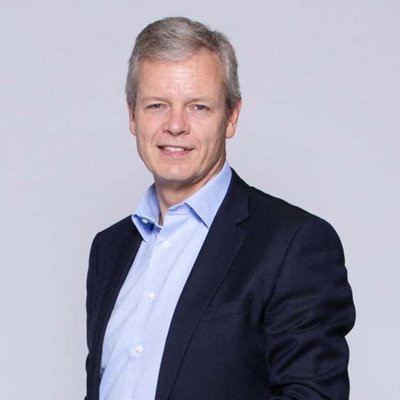May 25 | 2021
World Project Expo Explores Potential Markets

Breakbulk Events & Media took a global view of the project cargo markets during a World Project Expo, held during the opening day of Breakbulk Europe Connect21 May 19.
A range of industry executives and analysts offered insights across Europe, the Americas, Asia and Africa. Following is a brief overview of the market-by-market analysis. Video recasts of the session are available on Breakbulk.com.
Europe’s Energy Project Market is ‘Flipped’
For Europe, investment in energy projects “is flipped,” with regards to renewables and conventional energies, said Nekkhil Misra of Independent Project Analysis, or IPA.
“The investment market is flipped, where renewables or clean energy projects are considered safe and boring, and oil and gas is high-risk, and this affects companies that require cash,” explained Misha, managing director for Europe, the Middle East and Africa.
European energy companies are confronting the implications of climate change, with ambitious targets for clean energies. He noted the European O&G Total has a renewables goal of 35 gigawatts, or GW, by 2030, while BP intends to have 50 GW within the same time, he said. In addition, BP, Exxon and Shell plan to slash upstream operations by 30 percent to 40 percent.
Tax breaks coupled with increases in carbon tax are also motiving the move to clean energy.
From a project perspective, Misha characterized most renewables projects as “light industrial. While they’re certainly plentiful, they might not be as remunerative as their carbon counterparts.
Renewables “tend to be less complex, they could be more dispersed and can be less engineering-intensive, and unfortunately the returns aren’t what their oil and gas counterparts may give you,” he said.
In looking at the project industry’s global response to the pandemic, Misra said that Europe has experienced the brunt of supply chain delays, with Asia and the U.S. impacted, though at a lower rate.
“If you look at Europe, it started low and it’s gotten much higher, Misra said of disrupted supply chains.
He reported that European workforce availability was only about 79 percent, while “labor on the ground and construction productivity” recorded a 14 percent drop.
Americas Infrastructure, Mining Prospects Bright
A pair of executives from leading Americas-based engineering, procurement and construction companies offered their insights on projects prospects for infrastructure and mining in conversations with Leslie Meredith, Breakbulk Events & Media’s marketing and media director.
Mining
As with all global markets, the pandemic challenged Fluor, particularly in the South America region, including its flagship mining project in the south of Peru, as well as another project in the north of Chile.
“We managed to really overcome adversity. It was difficult and I won’t sugar coat it, but we managed well,” said Alex Azparrent, director of logistics, supply chain and commercial strategies. “It stress-tested our team, but our company really pulled together. We generated a lot of value for our clients, we executed our projects and really solidified our position in the region.”
Azparrent is very optimistic for the coming year. Noting mining is cyclical, “I think this new cycle is going to be a bit more tapered,” he said. “We are working on a number of FEEDs (front-end engineering contracts) and prospects, not just in the region but throughout the mining world.”
Resuming demand for commodities, particularly copper, is driving the enthusiasm, as the U.S. and China are anticipated to see significant growth. As copper has hit record highs in costs, the potential is particularly lucrative.
Azparrent anticipates a mix of greenfield and brownfield mining projects. Chile, a more mature mining industry, is likely to see more expansions and upgrades, while Peru has some projects that will have to be developed from scratch. “Argentina sort of sits in the middle. It has some mining projects that have been executed, but there are some developments that are on the radar as well,” he added.
An energy-intensive industry, mining is also driving towards greener options. As mining is also water-intensive, desalination plants are becoming more prominent in the South American region as well.
Azparrent closed his forecast with two words: digital mining. He sees clients “driving the digital mining philosophy beyond what the traditional mines have called it.” It means more automation, autonomous equipment, driverless mining trucks and other innovations.
“There is a big push. I think mining companies are really taking a leap into the mine of the future,” he said.
Infrastructure
Andrew Gardner, president of Kiewit Supply Network, said that past 12 months has been a learning experience. “We’ve obviously learned a lot.”
Though the vast majority of Kewitt’s work is performed in the U.S. and Canada, the EPC sources globally, and so it faced impacts in lead times and availability of certain materials. However, he said, “our suppliers and our subcontractors are a huge part of our success.”
While the pandemic “caused a lot of companies and government agencies to kind of hit the pause button,” Kiewit was nonetheless able to execute projects. And he believes the coming 12 months “will bring about a lot of renewed interest in new infrastructure projects. I think it's just going to be a question of can we get our hands on the materials to be able to support that work?” he said.
Gardner anticipates mass transit projects, including high-speed rail and road-bridge-highway work, as well as “water infrastructure.” He also sees industrial projects, including power delivery and the transmission grid.
Of course, with the shift to renewables energy, Kiewit is also “engaged heavily” in solar and wind power generation markets, but he returns to sourcing potentially being an issue.
Energy Shapes China’s Project Prospects
Issues affecting China’s project prospects continue to be oriented around steel and oil and gas production, with a few recent wrinkles, according to Wei Zhuang, regional manager Asia, BIMCO, during his global project outlook for Asia.
As China has long dominated import and export of steel products – accounting for more than half of total global production – that hardly appears to be news. However, China, as well as Europe and the Americas, are facing a huge ramp-up in infrastructure projects. “That means the need is so much,” Zhuang said.
While facing steel tariffs from the U.S. since the Trump administration, China’s efforts seem as much to control the market, as well as feeding its own voracious needs for steel and steel products.
Despite the acknowledgement of curbing greenhouse gas emissions, China is expected to be building refinery capacity, though it will be plastics driven rather than for oil and gas, Zhuang said. He said that due to its middle class consumption of products, it is seeking to diversify its refined products instead of importing ever-larger volumes from overseas.
“From north to south, you can see a lot of refinery projects led by either CNPC (China National Petroleum Corp.), Sinopec or CNOOC (China National Offshore Oil Corp.),” he said.
He noted that China has made a strong commitment to carbon neutrality by 2030 and carbon peak by 2060. China installed nearly twice as much green energy capacity in 2020 as in 2019, he added.
Despite that commitment, though, Zhuang said by the end of 2021, “the Chinese regulators will decrease if not completely pull out of subsidies to the offshore wind farm.”
His final point was that China is endeavoring to reshape its supply chain. “With the rise in the labor force and a strong sense of environmental concern, China has moved a lot of industries to South Asia, which is also affecting the container shipping market,” he said.
Africa Projects Poised to Double Through 2030
Africa has continued to be a strong market for industrial projects, even during the pandemic, Edward James, director of content and analysis, MEED Projects.
The continent of 54 diverse countries, Africa saw more than US$80 billion in major project contracts awarded during 2020, well within the average over the past decade, with US$840 in total projects since 2011, James said.
Long struggling for development, MEED sees a positive escalating cycle, which feeds upon itself, ensuring project market demand in Africa for at least two decades.
In that time, MEED said there is more than US$1.8 trillion in known planned and awarded projects, meaning Africa would double the value of projects over the last decade.
“You have very high demographic growth leading to fast-growing economic growth, and on the back of these comes increasing demand for power and water, social infrastructure like housing and roads, university and education projects in general, healthcare facilities and so on,” he said.
China continues to represent a core source for projects as well as funding in Africa. Seven of the top 10 contractors are Chinese, and China’s Belt and Road Initiative targets Africa in financing as well as project development, according to James.
That development has built hand in hand with economic liberalization, which continues to attract foreign investment. Projects rely on financing from international development banks, including the World Bank, African Development Bank and Islamic Development Bank, he noted.
Prospects are largely aligned with those countries who have led in investment due to petroleum and other resources, including Egypt, Nigeria, South Africa, Ethiopia, Angola, Ghana and Kenya.
However future projects break towards cleaner energies, such as solar, geothermal and hydro power.
“What's really interesting about this pipeline of future projects is the fact that it's so broadly diverse and segmented across different sectors, which means there's an opportunity for everyone across all markets and rather than it being dominated by one sector in particular, there's an opportunity,” James said.




